WHAT'S NEW
BIOGRAPHY
FILMOGRAPHY
PHOTOS
ROBERT
MONTGOMERY
PRESENTS
RADIO DAYS
BOB AT HOME
BOB'S
BEWITCHING
DAUGHTER
PRINT THE
LEGEND
BRIGHT LIGHTS
OF BROADWAY
LEADING LADIES
THE ONES THAT
GOT AWAY
WANTED PAGE
LINKS
GUESTBOOK
CONTACT THE
WEBMASTER
It's hard to say how Robert Montgomery is best remembered; is it as the sophisticated leading man in the glossy M-G-M productions of the early 1930's; the Academy Award nominated actor in Night Must Fall and Here Comes Mr. Jordan; the real life naval lieutenant during WWII; the director who added two very significant films to the genre of film noir; the Emmy Award winning television producer/director/actor; the Tony Award winning Broadway director; the man who coached Eisenhower on his public appearances; the father of Elizabeth Montgomery, star of Bewitched; or perhaps he isn't remembered at all...certainly not as well as he should be. Not one biography has been written about this versatile actor and complicated man. His contributions seem to have been reduced to a footnote in pieces about other people and subjects. His film career often seemed to be a study in frustration, especially during what would prove to be his most prolific period; Montgomery himself lamented "So little of what I did in Hollywood gives me any pride of achievement. Three or four pictures out of sixty-odd. It's not very much." That estimate is probably a little conservative, but with endeavors as wide-ranging as the aforementioned, Montgomery certainly qualifies as a renaissance man. His story is an interesting one, one that has been left untold for too long...
Robert Montgomery was born Henry Montgomery, Jr. in Fishkill Landing, New York, in a large house on the banks of the Hudson River on May 21, 1904, the first of two sons (brother Donald was born in 1906) born to Henry Montgomery and Mary Weed Barnard. (In 1913 Fishkill Landing united with the adjacent Matteawan and became Beacon, for this reason Beacon is frequently sited as Montgomery's birthplace.) His father was Vice President of the New York Rubber Company and the family was comfortably off, although M-G-M later embellished the family's financial circumstances to enhance the wealthy playboy image they were promoting.
Montgomery attended the fashionable Pawling School for Boys in Pawling, New York and in 1918 was sent abroad to continue his studies in England, France, Switzerland and Germany. In 1922 Henry Montgomery, Sr. died and when the estate was settled the family found itself penniless which resulted in Montgomery finding employment as a mechanic's helper with the New York, New Haven and Hartford Railroad and as a deckhand aboard a Standard Oil tanker.
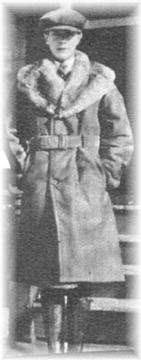
On April 14, 1928 Montgomery married socialite and fellow stage player Elizabeth Allen, formerly of Louisville, Kentucky. After having been turned down by Goldwyn talent scouts for having "too long a neck," Montgomery obtained a contract with M-G-M, and in 1929 he and Elizabeth Allen moved to Hollywood.
M-G-M was one of the largest and most important studios of the era. Formed in 1924 when the Metro studio merged with Goldwyn studios and Louis B. Mayer, M-G-M specialized in glossy, larger-than-life productions. After playing a bit part in the Garbo vehicle The Single Standard Montgomery was cast in Three Live Ghosts and then had the part of a college student in So This is College. After playing opposite Joan Crawford in Untamed and Norma Shearer in Their Own Desire Montgomery found himself typecast in the role of sophisticated playboy. A tuxedo became his uniform and a martini and a cigarette were his ever-present props.
In 1930 Montgomery received an important role in the prison drama The Big House, which was a significant departure from what he had been doing. Montgomery delivered an excellent performance as the frightened young prison inmate. Despite this obvious display of dramatic ability, in an amazingly short-sighted move, M-G-M saw fit to return him to the same parts he had been playing before.
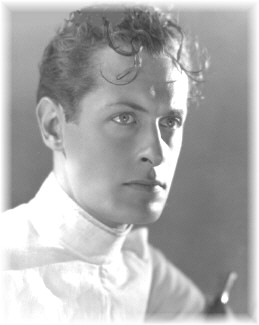
In 1932 the Montgomery's moved to Beverly Hills and on April 15, 1933 added a daughter, Elizabeth to their family.
In 1935 Montgomery was elected to the first of four terms as President of the Screen Actors Guild (SAG). SAG was organized in 1933 as a union for actors when the Producer's Association announced a 50% salary cut for actors already working six-day weeks for $65. Many actors didn't consider themselves "laborers" working for "bosses", but artists collaborating with producers. While feeling the need for some sort of guild, they were not in favor of a union, but rather a club which would work on friendly terms with producers. Montgomery had been among those originally in favor of a club, but worked quite vigilantly for the union during his presidency. In 1934 a failed fundraiser wiped out the Guild treasury and Montgomery was among a group of actors and actresses who loaned the Guild money to replenish their funds. In 1935 the Guild became a national organization when it joined the Associated Actors and Artistes of America (4A's), a branch of the American Federation of Labor.
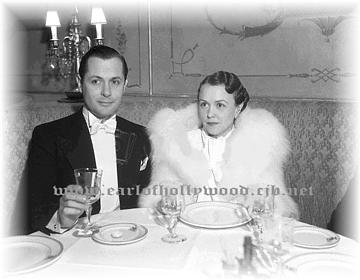
On February 15, 1936 the Montgomery family expanded to include a son, Robert, Jr., known to the family as "Skip". The Montgomery's also moved in 1936, from Beverly Hills to Holmby Hills.
The Screen Actors Guild boycotted the Oscars in 1936 and denounced the producer run Academy for selling out actors and operating as a bargaining operation for talent. On May 10, 1937 the Guild members voted to strike, demanding recognition for the Guild. Producers gave in to the demands and thirteen producers signed the first SAG contract that established a minimum wage for actors, including stunt men and extras. Montgomery, as President of SAG declared it the "victory of an ideal."
Montgomery also helped send gangster Willie Bioff to the Federal penitentiary when the Screen Actors Guild was being intimidated by Bioff and the Capone mob. After having his tires slashed, Montgomery hired two former FBI men to gather information on Bioff, which he then presented to Henry Morgenthau, then Secretary of the Treasury.
Montgomery was nominated as Best Actor by the New York Film Critics Circle in 1937 and 1941, mirroring his Academy Award nominations for Night Must Fall and Here Comes Mr. Jordan respectively.
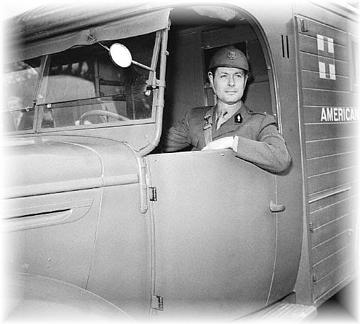
Anxious to contribute to the war effort, in 1940 Montgomery made an unpublicized visit to France, much to M-G-M's consternation, where he volunteered and drove an ambulance for several weeks. Upon returning to the United States, he and friend and fellow actor Douglas Fairbanks, Jr. determined to enlist in the service. Montgomery and Fairbanks applied for a commision in the U.S. Naval Reserve. Montgomery was sent to the Intelligence Section in the map room of the U.S. Naval Attache's office in London where he worked as an assistant. He then returned to the U.S. where he was assigned to set up a naval operations room in the White House.
Due to his military service, Montgomery was unable to attend the Febraruy 1942 Academy Award ceremony in which he was nominated as Best Actor for Here Comes Mr. Jordan. The oscar that year went to Gary Cooper (for Sergeant York.)
In 1942 Montgomery saw action at Noumea, Espiritu Santo, Guadalcanal and New Georgia and was operations officer aboard a destroyer during the D-day invasion of France. He also commanded a P.T. boat in the South Pacific.
Among the military honors bestowed upon Montgomery were the Bronze Star and being decorated as a Chevalier in the French Legion of Honor. Montgomery was retired from the Navy with the rank of commander.
When Montgomery returned to the U.S. in 1944 he had a serious case of tropical fever, but recovered enough to accept his first acting role in three years.
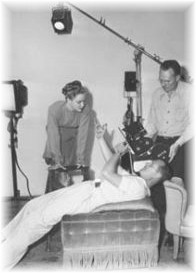
John Ford had offered him a leading role in what turned out to be Montgomery's only war film, They Were Expendable. When the company arrived on location in Miami Montgomery suffered a panic attack. Unsure of his ability to act after the three-year hiatus, he confided his fears to Ford who allowed him the time to prepare before filming his scenes. Montgomery later described Ford as the "best (director) I ever worked with...he was a genius." And when Ford fell and fractured his leg before filming was complete it was Montgomery he called upon to finish the job. There were several scenes left to film including many battle sequences; "...Duke (John Wayne) and I were visiting him (Ford) in the hospital when the telephone rang." Montgomery recalled in a 1980 interview, "It was Eddie Mannix from the studio, wanting to know when he'd be back. He said: 'I'm not coming back...I'm staying here and getting my leg right. Then I'm going back to the navy. Montgomery'll finish the picture.' That was the first I heard of it. It was quite a shock."
Montgomery's original intention was to direct and star in a film based on John Galsworthy's Escape and to use the subjective camera. This style, in which the camera is the protaganist, had never been employed for an entire full-length film before and M-G-M was against the project. "I wanted to do Galsworthy," Montgomery said, "because the story, people's reactions to an escaped convict, lent itself to the method. I had been contemplating the prospect since before I joined the Navy, but the actual way of doing it, of applying the form as a framework for a whole film, had to be worked out. M-G-M didn't want to do it, but I persuaded them at least to accept the basic principle. Edward Mannix, the vice-president, eventually gave me the go-ahead to use it in Lady in the Lake when the script was being revised, much to Louis B. Mayer's displeasure - although Mayer was quite happy to accept credit for it after the film had been well-received."
For Montgomery's next directorial effort he was back in front of the camera again; Ride the Pink Horse was based on a mystery novel by Dorothy B. Hughes and filmed on location in New Mexico. This is arguably the best film Montgomery directed; while obviously rooted in a specific time (post-war America) and place (a New Mexican border town), the film at the same time trancends both. Montgomery's style of direction was unique, he handles the well-trodden ground of sex and violence in a compelling way; the scenes between Montgomery and leading lady Wanda Hendrix are handled in a frank and upfront manner; the several brutally violent scenes are depicted in a matter-of-fact way which forces the viewer out of passive observation and brings them face to face with violence and it's consequences. The film is a classic, which if seen more today would definately have a higher place in the genre of film noir and classic film in general.
In September of 1947 forty-three members of the film industry, Montgomery among them, received subpoenas from the House Un-American Activities Commitee (HUAC). Orginally formed in the late 1930's, HUAC first concerned itself with opposing President Roosevelt's New Deal and other legislation which they deemed as tainted with Communism. HUAC reached Hollywood in 1940 when the testimony of ex-Communist John L. Leech was leaked to the press; Leech had named a number of prominent Hollywood actors as Communists, including Humphrey Bogart, James Cagney, Fredric March, Franchot Tone, Lionel Stander and Jean Muir. The Screen Actors Guild was outraged at the time and rallied around the accused, but as the strength of HUAC's attacks on Hollywood increased, a sense of every-man-for-himself emerged.
After WWII ended and the Cold War began, a strong current of anti-Soviet, anti-Communist fear began to surge through the United States. By 1947 things in Hollywood had come to a head and the industry was being accused of using films to impart communist messages to the nation. Of the forty-three called to testify, nineteen refused to cooperate and sighted their first ammendment rights in declining to answer questions; these nineteen were termed "unfriendly" witnesses. Montgomery along with actors George Murphy and Ronald Reagan had repositioned themselves and SAG regarding the menace of Communism, largely due to the changing attitudes of the nation. When the trio arrived in Washington they were counted among the twenty-three "friendly" witnesses.
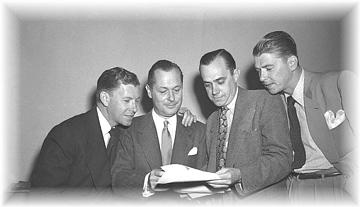
In 1948 Montgomery headed the Hollywood Republican Commitee to elect Thomas E. Dewey President. Dewey, three-term governor of New York, was a successful prosecuting attorney who had been defeated by Franklin D. Roosevelt in his 1944 bid for the Presidency. He was considered a shoe-in in the Presidential election of 1948, so much so that the Chicago Daily Tribune's headline on the morning after election day read "Dewey Defeats Truman", but in the largest political upset in U.S. history, Harry S.Truman was victorious and became the 32nd President of the United States.
Montgomery also revived his writing ambitions in the late 1940's, having several of his short stories published in magazines and periodicals of the time, including Colliers and American Magazine. He also found time to host the 1948 Academy Award ceremony, held March 24, 1949 and direct and star in Once More, My Darling.
In 1948 Montgomery who had done much radio work, served as producer of the radio series Suspense, but his radio work soon gave way to a relatively new medium, television.
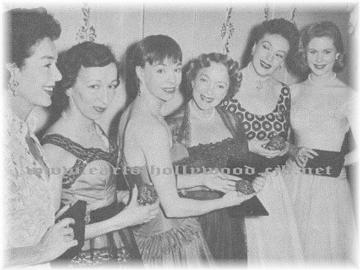
Attracted by the still unexplored possibilities of television, Montgomery debuted a new series in January of 1950. Robert Montgomery Presents was a weekly anthology series with an hour-long format. Montgomery not only produced the program, but hosted each episode and also occasionally starred in the series. The show was a success and won an Emmy as Best Dramatic Program in 1952. It had been nominated in the same category in 1951 and would be nominated again in 1953. Montgomery also received a nomination as Best Actor in 1952. The highly regarded series ran for eight years on NBC. It was on her father's show that 18-year-old Elizabeth Montgomery made her acting debut in 1951.
In 1950 Montgomery starred in his last feature film, the mystery yarn Your Witness, which he also directed.
Montgomery moved from California back to New York and on December 5, 1950 he and Elizabeth Allen were divorced. (Elizabeth Allen remained in New York where she died on June 28, 1992.) Four days later, on December 9, he married the former Mrs. William Hale Harkness, Elizabeth "Buffy" Grant Harkness, in Sag Harbor, on Long Island. The couple divided there time between an apartment on East Seventy-second Street in New York and a house on Hook Pond in East Hampton.
In 1952 Montgomery assisted Dwight D. Eisenhower in his Presidential campaign by coaching Eisenhower on his public appearances and speeches. Under Montgomery's careful attention, Ike became one of the most relaxed and confident speakers, especially during television debates. When Eisenhower was elected President he appointed Montgomery "special consultant on TV and public communications." When Richard Nixon lost the 1960 Presidential election to John F. Kennedy, Eisenhower, who had offered Nixon the services of Montgomery and been turned down, said "(Montgomery) never would have let him look as he did in that first television debate..."
In 1953 Montgomery produced another television series, Eye Witness, which featured stories about people who had witnessed crimes. This show did not catch on as Robert Montgomery Presents had and was relatively short-lived.
In 1955 Montgomery turned his attention to the Broadway stage, directing a play, The Desperate Hours. Written by Joseph Hayes and starring Karl Malden, Nancy Coleman and Paul Newman the play earned a Tony award as Best Dramatic Play and Montgomery also won as Best Director. Montgomery's daughter, Elizabeth accepted the award on his behalf. The Desperate Hours was made into a feature film that same year starring Humphrey Bogart and Fredric March.
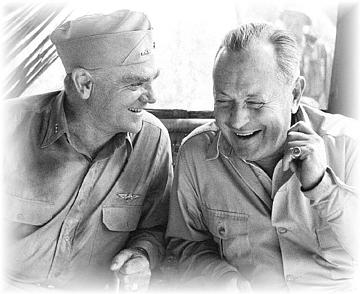
In 1959 Montgomery and actor James Cagney formed Cagney-Montgomery Productions and produced a biopic about Admiral "Bull" Halsey, whom Montgomery had served under during WWII. The film, The Gallant Hours was directed by Montgomery and starred Cagney as Halsey. Robert Montgomery, Jr. had a bit part in the film, as did James Cagney, Jr.
Beginning in the early 1960's Montgomery served as communications director for John D. Rockefeller III. He also was on the board of directors of the R.H. Macy Co., the Milwaukee Telephone Co. and the Lincoln Center for the Performing Arts.
In 1962 Montgomery directed another Broadway play; Calculated Risk was another Joseph Hayes play and starred the husband and wife team of Joseph Cotten and Patricia Medina. The play opened off-Broadway and was well-received. The opening night in New York also went well and the galley copy of the review that the company received that night was a rave. Unfortunately, the newspapers went on strike the very next day. With nothing to publicize their play, attendance dwindled. The same thing was happening all over Broadway and play after play was closing as a result. Cotten, determined not to let the play close had a brilliant idea, he and Medina went on television and advertised the play. They also appeared on game shows, talk shows and anywhere else they could make a pitch. The ploy worked, "we became known as the miracle on 49th street," recalled Cotten, " and ran the entire season."
In 1964 Montgomery's daughter, Elizabeth, who had previously been seen in over countless television programs over the past thirteen years was cast as the star of the television sit-com Bewitched, produced and directed by her third husband, William Asher.
In 1968 Montgomery authored the book An Open Letter From a Television Viewer in which he expounded on his theories on television.
In 1969 Montgomery served as President of the Lincoln Center Repertory Theatre.
Having sold the Hook Pond property, Montgomery and his wife spent their summers in a place on the water in North Haven, Maine and winters in an ancient farmhouse in the Canaan valley, in northwestern Connecticut. Montgomery spent most of the 1970's in retirement and on September 27, 1981, at Columbia-Presbyterian Hospital in Manhattan, Montgomery died of cancer. His body was cremated and the ashes given to the family.